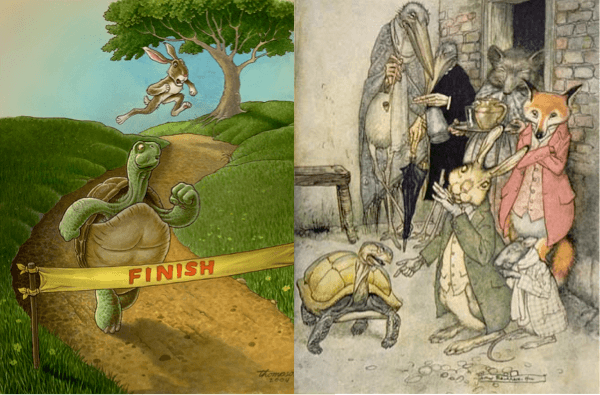Tell Μe Α Story: Using Storytelling In Online Training
Since starting my new job, I've been assigned somewhere around 30 self-paced, online trainings. Because I'm interested in designing self-paced learning, I probably approached each session with more interest in the design and format than the actual content. (OOPS!)
A good amount of the training was....painful. They were exactly what I fear for my own projects--slides filled with too much information; little to no visuals; and information dictated coldly and procedurally. The bad ones put me to sleep.
But now for the good. One of the trainings, about security awareness, was actually a memorable, interesting, and dare I say it--FUN--experience. The training took place from the learner's perspective, starting in your cube on your first day at a new job. Co-worker characters approached offering you advice, both good and bad. You toured around the office and surrounding buildings, stopping to "interact" with characters and scenarios. Here and there you were asked questions to test your understanding of content. At the end of each learning objective, you'd play a game and earn points toward a trophy, showing your mastery of a topic.
In the boring training’s defense, the great training versus the painful training certainly must have allowed more time on the development end. The graphics were slick, there were multiple videos and voice-overs, and the content was very detailed. But hypothetically, let’s say we gave all training development teams the same budget, regardless of topic.
How could we still create something learners would consider "good,” while still engaging and informing them?
I believe that by using storytelling, you can create excellent training at any budget.
Think back to the fables and stories you were told at a very young age. For example, everyone has heard the fable of the tortoise and the hare. (Quick recap- turtle challenges bunny to marathon race; bunny laughs and doesn't take it seriously; turtle plods along slowly but steadily, while the quick bunny is inconsistent and distracted; turtle beats bunny because "slow and steady wins the race.")

The picture on the left is cute! But my parents wanted to creep me out as a child and instead gave me the book with pictures like the on one the right. Why do those cranes have hands??
Rewind in time to your four-year-old self, and think if your mom and dad had sat you down, lectured you on the benefit of being consistent in achieving your goals, and closed with "slow and steady wins the race." Would this lesson have stuck with you? I'm guessing no. If you were anything like my four-year-old self, you'd be squirming and thinking about what color Power Ranger you'd like to be. The beauty of fables and stories we were told as kids was that we were learning without feeling trapped. It was an enjoyable experience.
Through the good and bad training that I've personally seen, the best tells you a story--it can be a complex story, or a simple scenario. Rather than boring and abstract facts, the learner is engaged in the information because it is relatable and engaging. Your brain actually reacts differently to reading descriptive, expressive language versus facts.
Basing your training design in reality changes the way a learner comprehends information. Add characters, company names, and build a "world" where the learners can immerse themselves. Giving a name to a company instead of calling it "a company" can instantly enrich your training. Your learner is more likely to remember a story and the lessons within it than rote facts. Even with a limited budget, writing a scenario instead of listing bullet points will get you much better levels of engagement.
Update: Learn more about using storytelling in the "The Science of Storytelling: Why Telling a Story is the Most Powerful Way to Activate Our Brains" Life Hacker article.









